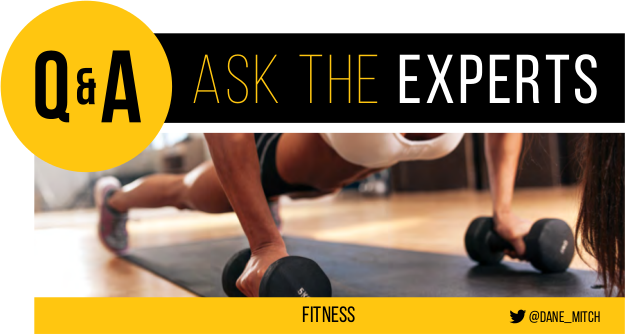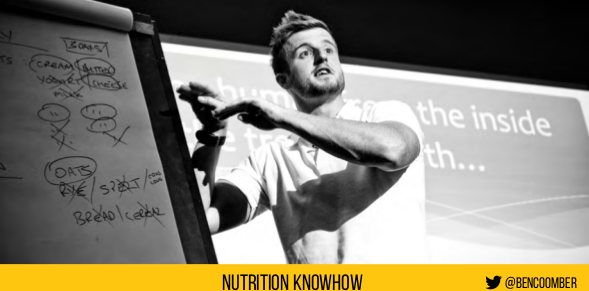BESTFIT Issue 17 – Ask the Experts
Share

Here are five set and rep schemes designed to help you mix up your training, and build muscle
Many gym goers get stuck in their ways. They may do 3 sets of 10 reps on every exercise, or the classic 5 sets of 5 reps, aiming to build strength and size. These tried-and-tested schemes certainly work, but progression and some planned variation is needed to stimulate additional muscle growth. Here are five ways to get an extra growth stimulus out of a set:Drop Sets:
Mechanical Advantage Sets:
Timed Sets and Density Sets:
Mythbusters
Do I need to train to muscular failure when lifting weights for optimal strength and muscle size gains?
Firstly, no, you don’t have to go to failure to develop strength or size. However, to overload your muscle sufficiently to stimulate an adaptation you need to get reasonably close to that point. I wouldn’t advise going to failure very often on big compound/movements (such as deadlifts and squats) in which you are lifting heavy weights for low repetitions, as it can increase the injury risk and is also very stressful on the nervous system.
However, training smaller muscle groups to failure with lighter weights in the 10-20-rep range can be beneficial for muscle growth, as you can get a huge metabolic disturbance in the muscle. This is also much safer, less taxing on the nervous system and makes it easier to recover.

When it comes to carbs, don’t believe the hype, says bestfit’s Ben Coomber.
Carbohydrates have been given a bad rap in recent years. We’re told that all fat is bad and we should eat carbs, but when that doesn’t work, it’s time to cut out the carbs and put butter in our coffee, right? Not quite.
The important things for fat loss are creating a calorie deficit (eating fewer calories than you burn over a given period) and doing some intense training to maintain muscle mass. This deficit is very possible to create with carbs on your side and moreover, reducing carbs makes it hard for your body to use it’s aerobic energy system, which is the one required to train hard enough for muscle maintenance and fat loss to occur. Foods containing carbohydrates are the ones most packed with fibre and water-soluble vitamins, like vitamins C and B12. They are important for thyroid function and sleep, and they are also some of the most satiating foods you can eat, cheap to buy and easy to prepare.
Here are my favourites…
White Potatoes
Sweet potatoes are really nutritious and taste amazing, but there’s just something about the humble spud, an excellent source of Vitamin C, potassium and manganese. They’re also incredibly versatile, which is what places them top of the pile. Boiled, roasted, ‘chipped’, mashed or cubed up and fried as a part of breakfast, there’s a ton of different ways to eat your spuds. They’ve even been found to be one of the most filling foods on the planet (more so even than protein sources) and when cooled they form a ‘resistant starch’.
Parsnips
Parsnips are for life, not just for Christmas. They’re packed with folate and thiamine, but they’re also an excellent source of a number of antioxidants, including falcarinol, panaxydiol and methyl-falcarindiol. They have almost an identical caloric load to white potatoes but a higher amount of fibre. They’re sweet too, so a very easy vegetable to give to children. Make them into oven chips and you’re on to a winner!
Jasmine Rice
If your prime interest is improving strength and/or performance, Jasmine rice is delicious, incredibly easy to digest (causing no gastric discomfort, bloating or gas and settling quickly, making it perfect for pre-workout meals), quick to cook and cheap to buy. If you are struggling to eat enough food to maintain your weight or even gain some during training, Jasmine rice is probably the easiest way to increase your carb intake without driving up your sugar intake.
Oats
Oats have almost as much versatility as potatoes; you can make them hot or cold, sweet or savoury and add anything you like to create a meal that fits your needs. They can be made into a flour for use in pancakes, or smoothies, or baked into cookies or snack bars and are generally a commodity food item with a whole host of uses. They really shine when it comes to fibre, too, having the second highest amount on our list per 100g and more than any other grain. The fibre in oats is known as beta-glucan, which ferments in the stomach to produce short chain fatty acids. Your body uses these to improve your cholesterol levels.
Beans
Beans (such as black beans, kidney beans, pinto beans and cannellini beans) aren’t just a carb source, they are a really important protein source for anyone eating a diet low in animalbased protein. They are full of magnesium and zinc, both of which are vital for exercise recovery as well as hormonal regulation, and are the highest food in fibre on this list, calorie for calorie.
Serve them as a side, add them to soups, mash them into burger patties or serve them in tacos or blend into hummus.





















FOLLOW BESTFIT